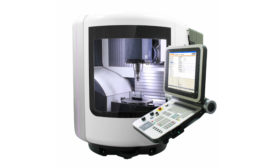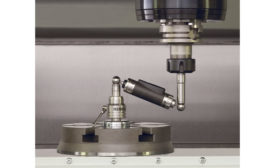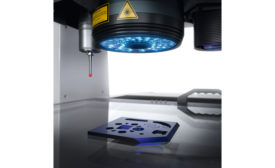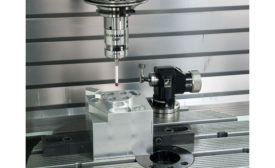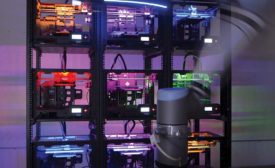Articles by Leah Pickett
Increasing machine uptime has never been easier.
Read More
Staying Error-Proof with Ballbar Testing
Smart, wireless ballbars keep a wide range of businesses competitive.
March 13, 2018
The Rise of Multisensor Measurement
Multisensor CMMs can measure 2D and 3D parts interchangeably, giving manufacturers a competitive edge.
March 1, 2018
3D Printing Speeds Development of New Materials for Medical Devices
Despite regulatory challenges, many U.S.-based companies and research labs are forging ahead with hybrid materials for 3D printed medical implants that could revolutionize healthcare.
March 1, 2018
Predictive Controls Level the Playing Field for the Next Manufacturing Workforce
Students at the Center for Manufacturing Innovation use automated setting for fast, accurate and repeatable metal cutting operations.
February 6, 2018
ERP Software: Get Thee to the Cloud—or Get Left Behind
ERP software vendors still provide on-premise and mixed ERP options for manufacturers, but the future is in the Cloud.
January 8, 2018
Collaborative Robots: Don't Fear the Cobot
Collaborative robots, or cobots, are infiltrating factories on a global scale. But can robots and humans really work together in harmony? We asked the experts.
January 1, 2018
GE Fuse’s Open Innovation Platform Invites NDT Professionals to Co-create Solutions
The young startup aims to accelerate the development of new products by inviting “curious minds around the world” to solve technical challenges.
October 17, 2017
QUALITY WEB EXCLUSIVES
WESTEC Returns to Los Angeles with a Focus on the Future of Manufacturing
Read our summary of the 2017 event.
September 21, 2017
How Two Organizations Turned Problems into Opportunities with Lean Six Sigma
By instilling Lean Six Sigma methodologies into their workforces, Ellis Medicine and MC Assembly became continuous improvement organizations.
August 1, 2017
Stay in the know with Quality’s comprehensive coverage of
the manufacturing and metrology industries.
eNewsletter | Website | eMagazine
JOIN TODAY!Copyright ©2024. All Rights Reserved BNP Media.
Design, CMS, Hosting & Web Development :: ePublishing
